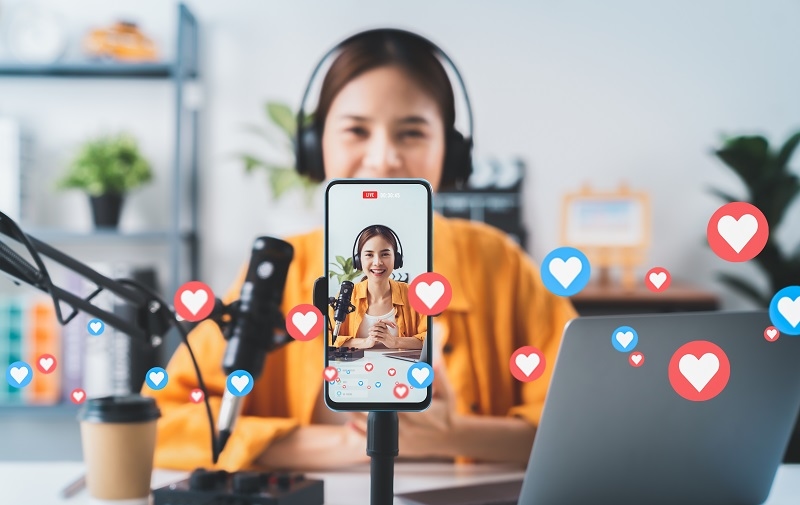
AI Brand Strategy 2025 Enabling Hyper Personalized Branding
A few years ago, brands thought personalization meant adding someone's first name to an email. Cute back then, but painfully basic now. In 2025, people expect brands to not just "know their name" but actually understand them - their mood, their habits, even when they're most likely to buy. And here's the wild part: AI is making it possible, not in tiny test groups, but across millions of people at once.
This is what marketers are calling hyper-personalization. It's not a gimmick. It's quickly becoming the difference between brands that fade into background noise and those that feel like part of a customer's daily rhythm.
So how exactly does it work? And how do you avoid crossing the line from "wow, that's helpful" to "wait, are they spying on me?" Let's talk through it.
Why Personalization Is Having a Moment
People are exhausted by one-size-fits-all marketing. Who hasn't rolled their eyes at ads that completely miss the mark? You search for headphones once, and suddenly you're stalked by irrelevant "50% off earbud" banners for weeks.
Customers today want smarter interactions. If they've just bought running shoes, they'd prefer to see sports socks or hydration gear - not another pair of the same shoes. That level of timing and relevance is what makes them think, "Okay, this brand gets me."
And that's why AI is now central to how modern branding works. It crunches thousands of signals customers leave behind and turns them into stories that feel surprisingly personal.
AI Brand Strategy in 2025
What does an AI brand strategy 2025 actually look like? It's no longer about blasting the same campaign to millions of inboxes. Instead, it's like having a conversation with each customer - across channels, across devices, across time.
Picture this: you browse a product at lunch, later that evening the app suggests a how-to video, and by the weekend you get an offer that actually matches your size and color preference. It feels seamless, almost invisible.
Brands that nail this approach aren't just selling stuff. They're building relationships. And in a marketplace where attention is fleeting, that trust is the currency.
AI-Driven Branding: Creative, Not Robotic
Here's the myth we need to bust: AI-driven branding isn't about robots replacing creativity. It's about scaling creativity in ways humans can't do alone.
Think ad visuals that adjust to cultural preferences, or product descriptions that subtly change tone depending on who's reading them. A student in New York and a parent in Madrid might see the same product framed differently, and yet it still feels like the same brand voice.
But here's the catch - go too far, and it feels invasive. Customers aren't dumb. They know when they're being overly tracked. The trick is transparency. Tell them you're using AI. Let them opt out. Ironically, honesty builds more loyalty than pretending you're not personalizing at all.
Dynamic Branding: A Living Identity
Once upon a time, branding was rigid. Logos, colors, typefaces - all locked down. Now, with dynamic branding, identity is flexible.
One streaming service changes its logo color depending on the time of day. A sportswear brand tweaks its homepage images to match local weather. It sounds like a small detail, but to users it says: "We're moving with you."
And that's the appeal for younger audiences. Static feels outdated. Dynamic feels alive.
You May Also Like: Coffee Maker That Brew the Perfect Cup Every Morning
Personalized Customer Journeys
Forget the neat funnel we were taught in business school. Nobody goes from awareness to interest to purchase in a straight line anymore. Real journeys are messy. A TikTok video leads to a Google search, which leads to reading reviews, which leads to a discount email three days later.
AI doesn't eliminate the chaos - it maps it. That's the secret behind personalized customer journeys. It helps brands know when to nudge and when to step back.
Maybe a customer who ignores emails responds instantly to app notifications. Another hates notifications but engages with Instagram Stories. By letting AI learn those patterns, brands stop wasting energy on dead ends and start showing up where it matters.

Content Is Still King - Just Smarter
At the end of the day, personalization doesn't work without good content. You can have all the algorithms in the world, but if your videos are boring or your copy is flat, no one cares.
What's changing is how content is tailored. One brand now creates hundreds of variations of the same ad to match micro-segments of its audience. Another uses AI to test video endings - showing one version to casual browsers and another to repeat customers.
It's not about pumping out more content. It's about making the right content land in front of the right eyes.
Risks You Can't Ignore
Let's be blunt: there are real risks. Data privacy is at the top of the list. Regulations are tightening, and consumers are more watchful. One misstep, and a brand that spent years building trust can lose it overnight.
There's also a fatigue factor. Too much personalization, too fast, feels creepy. Nobody wants to feel like they're being shadowed by a brand. The smarter play? Restraint. Offer relevance, not overkill.
What People Actually Want
This might surprise you: customers don't always want hyper-personalization. Sometimes they just want clarity. A simple answer. A straightforward offer.
The winning brands are the ones that ask: what's genuinely useful here? Because no one cares about fancy AI tricks if they don't solve a real problem.
Where It's Headed
Looking forward, the tech will only get more immersive. Imagine AR shopping that adapts to your living room, or voice assistants that know your morning routine better than you do.
But under all the flash, one thing stays true: empathy. AI can handle the data, but brands still need to sound human. The moment personalization stops feeling personal, it stops working.
Worth A Look: Cost-Effective and Dependable Top Office Printer in 2025
Final Thoughts
In 2025, personalization isn't a nice-to-have. It's the foundation of modern branding. With tools like AI-driven branding, approaches like dynamic branding, and strategies built around personalized customer journeys, brands can finally make customers feel seen - at scale.
The question is no longer "Should we personalize?" but "How do we do it well, without overstepping?" The brands winning in 2025 already know the answer: they use AI not as a gimmick, but as a bridge between data and real connection.
And that's the difference. Personalization isn't just marketing anymore. It's storytelling. It's trust. Done right, it's the reason a customer comes back tomorrow.
Categories
- Arts & Entertainment 100
- Automotive 186
- Business & Professional Services 219
- Construction & Contractors 298
- Clothing & Accessories 76
- Community & Government 95
- Computers & Electronics 74
- Education 75
- Food & Dining 86
- Health & Medicine 186
- Legal & Financial 100
- Home & Garden 179
- Industry & Agriculture 105
- Media & Communications 44
- Personal Care & Services 73
- Real Estate 68
- Shopping 74
- Sports & Recreation 87
- Travel & Transportation 102
- Animals & Pets 11
- Arts 9
- Community 9
- Chain 607
- Computers & Internet 8
- Health Care 10
- Communication & Media 7
- Shopping & Retail 10
- Health & Beauty 9
- Education & Schools 8
- Financial & Legal Services 14
- Home & Office 13
- Lawyers & Legal Services 7
- Financial & Services 1
